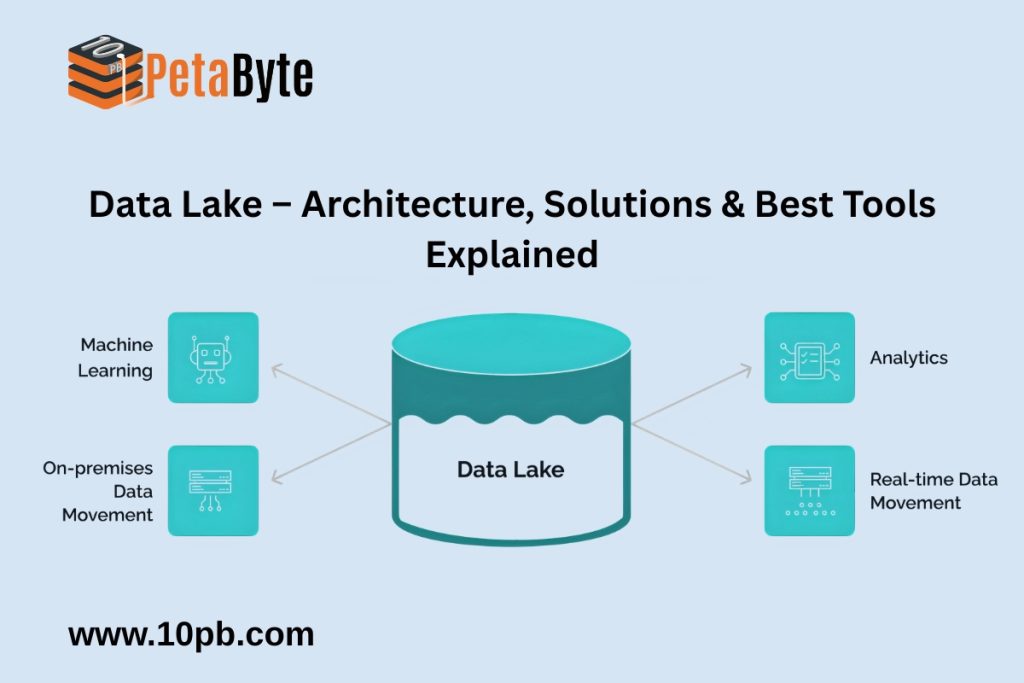Introduction: Why Data Lake Matters Today
In a world increasingly dominated by digital, it’s no secret that business generates an overwhelming amount of structured and unstructured data. Effectively harnessing and analyzing all of this data is essential to driving innovation and customer-centricity, as well as supporting effective decision-making processes. While traditional databases limit volumes and formats of data, a data lake stores terabytes (or more) of raw data for future processing and analytics.
What is a Data Lake?
A data lake is a single storage location to store all the various types of data – structured, semi-structured, and unstructured – and at any dimension, all at one place. It can accept any type of data at its raw format, and as opposed to a pre-defined schema like a data warehouse, solution allows for an organization to ingest its data, and then structure it at a later time, when it is most needed.
The main advantages of data lake, include:
– Large data storage at a comparatively low cost
– Acceptance of all means of data (CSV, JSON, video, logs, IoT streams)
– Cloud, or on-premises scalability
– Flexibility for AI, machine learning, and advanced analytics
Simply put, if your business handles large and diverse data sets,It is a solution that can provide the agility and scalability required to turn that data into insights.
Data Lake vs Data Warehouse: What’s the Difference?
One of the most frequently asked questions we get is: what is the difference between a data warehouse and a data lake? Although they sound similar, they have remarkably different use cases.
Key Differences:
The data
– Data Lake – Able to store raw, unstructured, and structured data of the highest quality.
– Data Warehouse – Able to store structured, processed, and cleaned data.
The schema
– Data Lake – This means that it follows a schema on read (the data is structured when you access it).
– Data Warehouse – This means that it follows a schema on write (the data is structured before its stores).
Use case:
– Data Lake – This use case is best for data that is going to be used for AI, machine learning, or big data analytics.
– Data Warehouse – This use case is best for reporting, BI dashboards, or historical analysis.
Cost & scalability :
– Data Lakes – provided higher returns on investment and capacity to scale.
– Data Warehouses – hence a more traditional approach in processing cost and performance optimization.
In short, if you are managing your data lake vs data warehouse choice, it boils down to what your organization values most – real time innovation vs structured reporting.
Looking for Premium Services in Netforchoice
Data Lake Architecture Explained
It is important to understand the architecture of a data lake to be successful. Although there are different architectures , in general it is comprised of four main layers:
Ingestion Layer – The first one is the ingestion layer, which is responsible for ingesting the raw inputs from multiple sources (web and mobile applications, different types of databases, IoT devices, social applications, and any other source).
Storage Layer – After the data is ingested it is stored as is (raw) or transformed (structured or unstructured), in the storage layer on local clusters or cloud storage.
Processing Layer – After the storage layer, the data is transformed, cleaned, and/or enriched into a useful dataset for advanced analytics in the processing layer.
Consumption Layer – This last layer is where the users query, visualize, or analyze the data through various business intelligence tools, dashboard visualizations, or AI models.
Modern tools provide native integration with machine learning platforms, so that organizations can build predictive models on top of the data lake data.
Delta Lake vs Data Lake: What’s the Difference?
Another important and interesting comparison is :
– Data lake: Store everything, limited consistency, lower transaction support.
– Delta lake: Enhanced storage layer that is built on top of a basic data lake. Delta lakes include features such as ACID transactions, data schema enforcement, time travel queries and checkpoints.
Top Data Lake Solutions
Organizations today have a plethora of solutions that cater to the specific needs of the business.
A few of the most well-known include:
– 10PB – Secure, scalable, and tightly integrates .
– Azure – Cloud-based storage with advanced analytics support.
– Google Cloud Storage + BigQuery – Flexible and highly scalable.
– Snowflake – Combines warehouse and lake capabilities.
– Databricks Delta Lake – Is adopting ACID transactions mindset to it.
When choosing a solution, consider scalability, integrations, governance, and cost.
Best Data Lake Tools & Software
The performance of a this software depends heavily on the tools and software ecosystem surrounding it. Here are some of the best software and tools:
– 10PB – The original open-source big data framework.
– Apache Spark – Distributed processing for analytics and machine learning.
– Databricks – Unified analytics platform for data and AI.
– Talend & Informatica – ETL tools for data ingestion and transformation.
– Tableau & Power BI – Visualization tools for solution consumption.
The best software for your organization depends on your data volume, use cases, and IT ecosystem.
Why Businesses Need a Data Lake?
A data lake is now a requirement for organizations that deal with big and diverse amounts of data.
It allows:
– Real-time analysis and machine learning
– Low-cost big data storage
– Compatibility with BI and visualization tools
– Quicker innovation and improved decision-making
Putting the proper architecture and tools in place protects an enterprise’s future technological landscape.
Looking for : Cloud Based Micro Data Center?
Concluding: Building Your Future
It is not just a storage structure, but a starting point for data-driven expansion. Regardless of if you are comparing a data lake vs data warehouse, understanding what software is the best, you are attempting the same thing – unleash the power of your data.
Through a solution you can begin to move through traditional limitations, handle massive data sets and be confident in creating advanced analytics and AI-driven insights.



